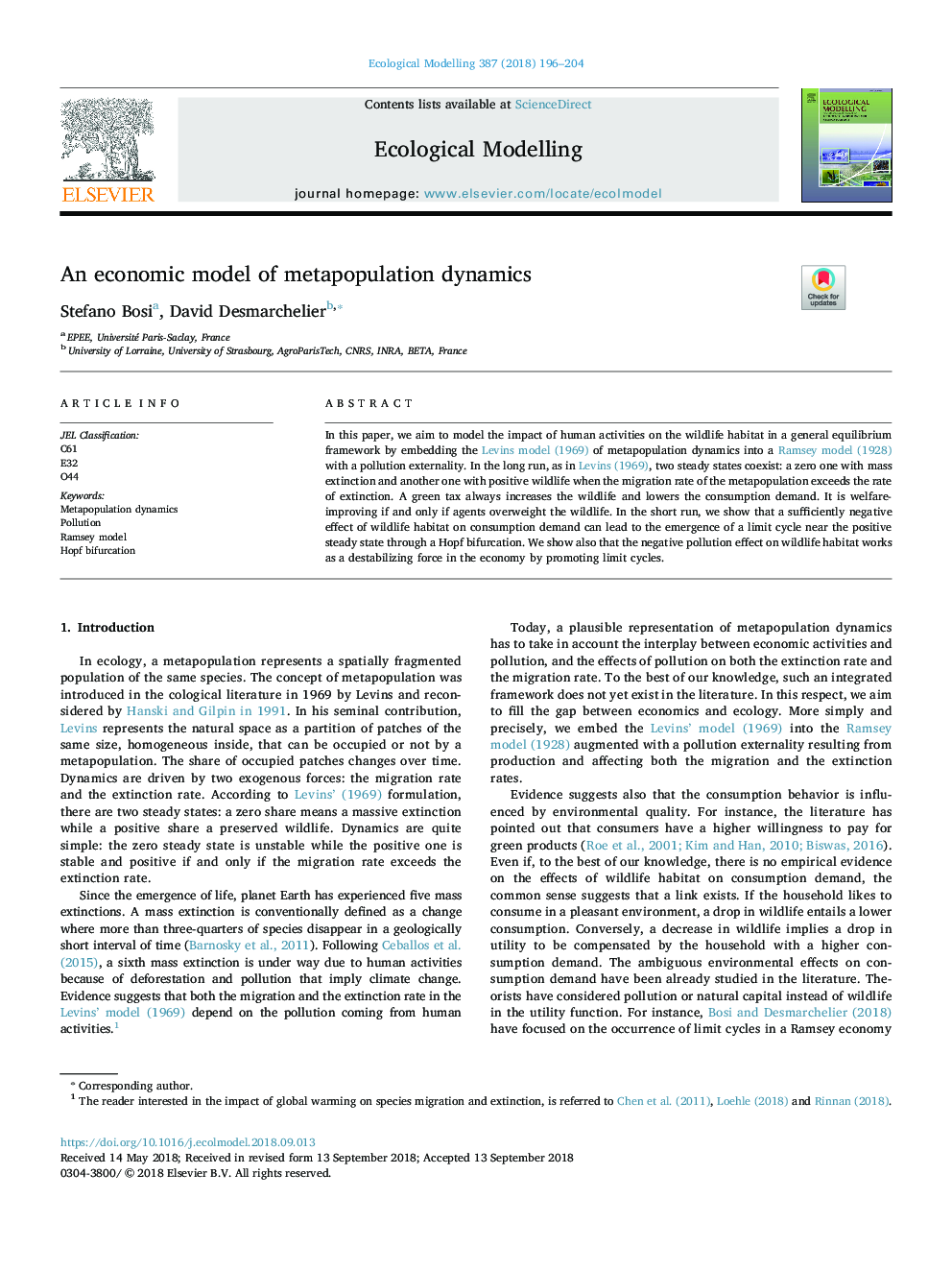| Article ID | Journal | Published Year | Pages | File Type |
|---|---|---|---|---|
| 11028713 | Ecological Modelling | 2018 | 9 Pages |
Abstract
In this paper, we aim to model the impact of human activities on the wildlife habitat in a general equilibrium framework by embedding the Levins model (1969) of metapopulation dynamics into a Ramsey model (1928) with a pollution externality. In the long run, as in Levins (1969), two steady states coexist: a zero one with mass extinction and another one with positive wildlife when the migration rate of the metapopulation exceeds the rate of extinction. A green tax always increases the wildlife and lowers the consumption demand. It is welfare-improving if and only if agents overweight the wildlife. In the short run, we show that a sufficiently negative effect of wildlife habitat on consumption demand can lead to the emergence of a limit cycle near the positive steady state through a Hopf bifurcation. We show also that the negative pollution effect on wildlife habitat works as a destabilizing force in the economy by promoting limit cycles.
Related Topics
Life Sciences
Agricultural and Biological Sciences
Ecology, Evolution, Behavior and Systematics
Authors
Stefano Bosi, David Desmarchelier,
